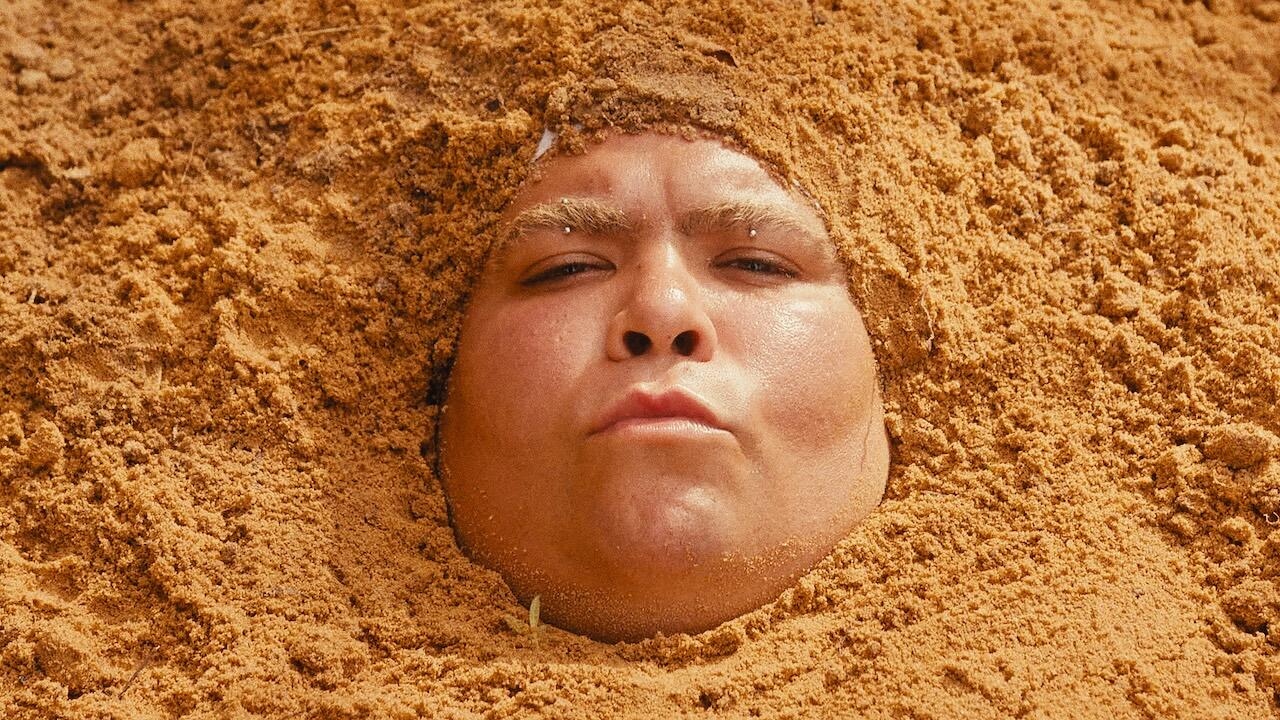Subversion

What does it mean to subvert? The term usually implies the overthrow of a widely accepted system of authority. Curated by Omar Kholeif, ‘Subversion’ was the ironically intended title of an exhibition of works by 11 artists based in the Middle East that bluntly and boldly corrupted the institution of ‘Arab identity’. As described by the curator, it comprised three ‘acts’, each of which unravelled across a different floor of Cornerhouse’s gallery spaces; the language and presence of theatre was felt throughout the show. ‘Subversion’ told a story, one in which each of the works played characters in an overarching narrative.
Swapping Palestine with outer space, Larissa Sansour’s 2009 film A Space Exodus (2009) – a riff on 2001: A Space Odyssey (1968) – was accompanied by her Palestinauts (2010), toy-like astronauts adorned with the Palestinian flag, ‘Aladdin’ shoes and helmets with a television monitor-shaped window. Here the Palestinian-born, London and Copenhagen-based artist playfully appropriated Western-dominated images of the space race, pushing colonialism to an extra-terrestrial level, and suggested that the pursuit of progress and technology embodied by space exploration could be for a territory without nationhood status. Shown in an adjacent space was Egyptian artist Sherif El-Azma’s Television Pilot for an Egyptian Air Hostess, Soap Opera (2003), one of his best-known works. Accompanied by aeroplane chairs in which to watch the hour-long video, the work follows two women’s journey through a flight-assistant recruitment process and employment, as they eventually lose their identities and become subsumed into a sterile, mechanical environment of perma-smiles and sexualized bodies.
A lyrical quality pervaded the second floor, where many of the works spoke to a sense of longing. Sansour’s installation The Nation Estate (2012) articulated a Utopian vision of a centralized, tower-block Palestine, with a different territory on each floor, while the absence of Beirut’s recently demolished Carlton Hotel in Marwa Arsanios’s archive and animation assemblage I‘ve Heard Stories, Part 1 (2008) demonstrated the artist’s fascination with the mystery and sexual-history of the site, through the piecing together of rumours and clues about a murder that precluded the hotel’s closure. A long-lost lover and hidden romantic encounters uttered by characters in Akram Zaatari’s films Red Chewing Gum (2000) and How I Love You (2001), respectively, were shown on screens facing each other, in delight and discord, like out-of-sync lovers.
The final floor featured two large-scale installations, for which the artists worked closely with set designers to reconfigure their works for a new context. In Iraqi artist Wafaa Bilal’s Virtual Jihadi (2008), half an Internet café was constructed, simulating a space where gamers could be found spending hours entranced by combat scenarios and inviting the visitor to physically occupy this same space. Virtual Jihadi swapped the Iraqi enemies from the 2003 videogame Quest for Saddam with their American counterparts, emphasizing the inherent Islamophobia in such an entertainment outlet as a signifier for a more widespread cultural phenomenon whilst literally highlighting the ongoing violence in Iraq. The work of young Palestinian twins Tarzan and Arab (Mohamed and Ahmed Abu Nasser) was presented in a cinema space, complete with velvet seating borrowed from a cinema. Playing on a loop was the short film Colourful Journey (2010), an action-movie-style detour through the rubble of a Gaza neighbourhood, the twins playing the armed protagonist. Here you could take a seat that had likely been witness to the blockbusters that it parodies, while posters from the twins’ 2010 Gazawood project announced fictional Tarzan and Arab films, their titles – such as Cast Lead and Save Gilad – taken directly from Israeli Defence Force military campaigns.
Avoiding a toxically topographic curatorial framing, ‘Subversion’ instead took the ‘Middle East’ and the ‘Arab’ as imagined constructs. The show brought together these artists to reflect on how they, with varying degrees of sophistication, using humour and irony, play with these systems and institutions to suggest how dependent they are on us, as viewers – of how elements of stories can become fixed as place.
















